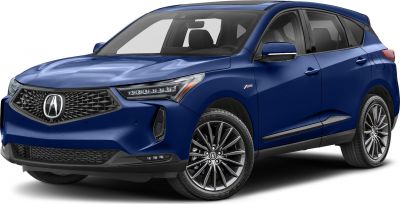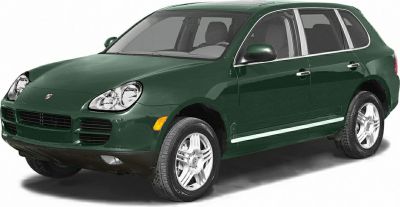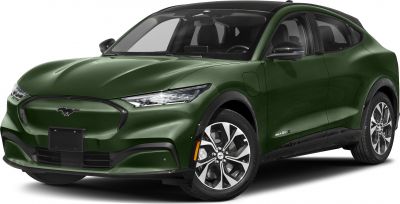 2015 Ford Edge II Dimensions, Size & Specs
2015 Ford Edge II Dimensions, Size & SpecsMeasurements of the 2015 Ford Edge II, engineered for optimal performance and comfort
| Dimensions | |
|---|---|
| Length: | 4778-4808 mm188.1-189.3 in15.7-15.8 ft |
| Width: | 1928 mm75.9 in6.3 ft |
| Width (Folded Mirrors): | 1981 mm78.0 in6.5 ft |
| Width (Opened Mirrors): | 2184 mm86.0 in7.2 ft |
| Height: | 1707-1742 mm67.2-68.6 in5.6-5.7 ft |
| Ground Clearance: | 201-203 mm7.9-8.0 in0.7-0.7 ft |
| Trunk Capacity: | 800-1110 liter28.3-39.2 cu ft |
| Trunk Capacity (Max): | 1847-2079 liter65.2-73.4 cu ft |
| Weight Specifications | |
| Curb Weight: | 1774-1874 kg3911-4131 lbs |
| Maximal permitted Weight: | 2505-2555 kg5523-5633 lbs |
| Roof Load: | 75 kg165 lbs |
| Tire Specifications | |
| Rims Sizes: | 19-inch rims:
|
| Tire Sizes: |
|
The Ford Edge II, produced from 2015 to 2018, is a mid-size SUV that combines robust dimensions with versatile functionality. Measuring between 4778 mm and 4808 mm (188.2 - 189.4 inches) in length, this SUV offers a stable and commanding road presence. Its width spans 1928 mm (75.9 inches) with folded mirrors, extending to 1981 mm (77.9 inches), and further out to 2184 mm (85.9 inches) with mirrors open, providing a balance between cabin spaciousness and urban maneuverability. The height ranges from 1707 mm to 1742 mm (67.2 - 68.6 inches), contributing to its aerodynamic yet robust stance.
Weighing between 1774 kg and 1874 kg (3912 - 4131 lbs) curb weight, the Ford Edge II supports a maximum gross weight between 2505 kg and 2555 kg (5524 - 5633 lbs). Ride height, or ground clearance, is comfortably set at 201 mm to 203 mm (7.9 - 8.0 inches), facilitating confident driving over various terrains. The rim sizes available range from 18 to 20 inches with tire sizes including 235/55 R19, 255/45 R20, and 245/60 R18, ensuring optimized handling and ride comfort.
Cargo capacity is generous and adaptable, with luggage space ranging from 800 liters (28.3 cubic feet) up to 1110 liters (39.2 cubic feet) depending on seating configuration. With rear seats folded, this expands intricately from 1847 liters to an impressive 2079 liters (65.2 - 73.4 cubic feet), making it perfect for families or those requiring flexible storage. The Ford Edge II also supports a roof load of up to 75 kg (165 lbs), suitable for additional gear like roof boxes or sports equipment.
Overall, the 2015-2018 Ford Edge II offers a well-rounded package in size and utility, balancing passenger comfort, cargo versatility, and mid-size SUV dynamics. It remains a competitive choice in its segment for drivers valuing space, performance, and style.
Discover the standout features that make the 2015 Ford Edge II a leader in its class
Have a question? Please check our knowledgebase first.
The Ford Edge II, produced between 2015 and 2018, features exterior dimensions that contribute to its robust and spacious SUV design. The length of the vehicle ranges between 4778 mm and 4808 mm (approximately 188.1 to 189.3 inches). Its width stands at 1928 mm (75.9 inches) with folded mirrors, expanding to 2184 mm (85.9 inches) when the mirrors are opened. The height of the Edge II varies between 1707 mm and 1742 mm (67.2 to 68.5 inches). These dimensions provide a balanced combination of interior space and maneuverability, making the Edge II suitable for urban and highway driving alike.
The Ford Edge II's curb weight, which is the weight of the vehicle without occupants or cargo but with all necessary fluids, ranges from 1774 kg to 1874 kg (3912 to 4131 pounds). This weight supports the SUV's strong structural build and performance capabilities. The maximum allowable weight, known as the Gross Vehicle Weight Rating (GVWR), ranges between 2505 kg and 2555 kg (5524 to 5633 pounds). This indicates the maximum loaded weight the vehicle can safely handle, including passengers, cargo, and additional equipment. Understanding these weights is crucial for safe loading and ensuring optimal driving performance.
The Ford Edge II offers impressive cargo capacity tailored to family and adventure needs. With the rear seats in their upright position, the luggage capacity ranges from 800 liters to 1110 liters (approximately 28.3 to 39.2 cubic feet), providing ample space for everyday items, groceries, and luggage. When the rear seats are folded down, the cargo volume significantly expands, ranging from 1847 liters to 2079 liters (65.2 to 73.4 cubic feet). This increased space accommodates larger items such as sports equipment, furniture, or bulkier cargo, making the Edge II highly versatile for both daily use and road trips.
The Ford Edge II boasts a ride height or ground clearance between 201 mm and 203 mm (approximately 7.9 to 8 inches). This clearance height is advantageous for an SUV, allowing it to navigate rougher terrains, minor off-road trails, and uneven surfaces without damaging the undercarriage. It enhances driver confidence when encountering speed bumps, steep driveways, or poorly maintained roads typical in urban environments. While not a hardcore off-roader, the Edge II's ground clearance strikes a balance between everyday usability and light off-road capability, making it suitable for a wide range of driving conditions.
Standard residential garages typically have widths around 2400 mm to 3000 mm (94.5 to 118 inches) and heights around 2000 mm to 2400 mm (79 to 94.5 inches). With a width of 1928 mm (75.9 inches) excluding mirrors, and 1981 mm (77.9 inches) with folded mirrors, the Ford Edge II comfortably fits within the width constraints of most standard garages. Its height, ranging from 1707 mm to 1742 mm (67.2 to 68.5 inches), also clears typical garage ceilings. However, drivers should consider mirror position and any installed roof racks or accessories for additional clearance. Overall, the Edge II is well-suited for parking in standard home garages without modification.
Compared to its predecessor, the first-generation Ford Edge (2007-2014), the Edge II demonstrates several dimensional enhancements that emphasize increased interior space and a more substantial road presence. The second generation is generally longer, with lengths extending up to 4808 mm (189.3 inches) compared to the previous generation's approximate max length of 4761 mm (187.4 inches). Width has also increased, now measuring 1928 mm (75.9 inches) excluding mirrors versus approximately 1887 mm (74.3 inches) on the first generation. Height varies slightly, with the newer model between 1707 mm and 1742 mm (67.2 to 68.5 inches), generally similar to the predecessor. These changes translate to improved cabin comfort, increased cargo capacity, and a more commanding exterior stance.
The Ford Edge II competes in the midsize SUV segment, where it holds a competitive size profile relative to rivals such as the Honda Pilot, Toyota Highlander, and Chevrolet Equinox. With a length ranging from 4778 mm to 4808 mm (188.1 to 189.3 inches) and width of 1928 mm (75.9 inches), the Edge II is slightly longer and wider than some competitors, offering more cabin and cargo space. Its cargo capacity, with up to approximately 2079 liters (73.4 cubic feet) of space with seats folded, is on par or better than many midsize SUVs of its era. The Edge II’s ride height and ground clearance also afford it competent handling on varied road surfaces, helping it stand out as a well-rounded vehicle in its class.
The Ford Edge II offers several tire and rim sizes to cater to different driving preferences and performance needs. Rim sizes available include 8J x 19 inches, 8.5J x 20 inches, and 18 inches (exact dimensions listed as 8J x 19, 8.5J x 20, and 18). Corresponding tire sizes include 235/55 R19, 255/45 R20, and 245/60 R18 respectively. These sizes provide a blend of comfort, handling precision, and aesthetic appeal. Larger rims and wider tires such as the 20-inch option enhance sporty handling and road grip, while slightly smaller rims can contribute to a smoother ride and potentially better tire longevity. These options allow drivers to tailor the Edge's driving experience to their individual tastes and use cases.
The maximum roof load capacity of the Ford Edge II is 75 kilograms (approximately 165 pounds). This limit indicates the weight the roof and any factory-installed roof racks can safely support without compromising vehicle stability or structural integrity. When carrying rooftop cargo such as luggage carriers, bikes, or sports equipment, it's essential not to exceed this load capacity to ensure driving safety, especially at higher speeds or in adverse weather conditions. Staying within this limit helps prevent excessive strain on the vehicle's roof structure and maintains safe handling characteristics.
The height of the Ford Edge II ranges from 1707 mm to 1742 mm (67.2 to 68.5 inches), accounting for variants and optional equipment. This height provides generous interior headroom, enhancing passenger comfort for front and rear occupants alike. From an aerodynamic perspective, the Edge II’s height balances the SUV’s upright and spacious cabin design with efforts to reduce drag and wind noise. While taller than sedans, the dimensions are optimized to ensure stable high-speed performance and fuel efficiency competitive within the SUV segment. Overall, the height contributes positively both to comfort and driving dynamics.
Discover similar sized cars.

| Production: | 2021-present |
|---|---|
| Model Year: | 2022 |
| Length: | 4760 mm187.4 in |
| Width: | 1900 mm74.8 in |
| Height: | 1669 mm65.7 in |

| Production: | 2019-2021 |
|---|---|
| Model Year: | 2019 |
| Length: | 4747 mm186.9 in |
| Width: | 1880 mm74.0 in |
| Height: | 1669 mm65.7 in |

| Production: | 2007-2013 |
|---|---|
| Model Year: | 2007 |
| Length: | 4844 mm190.7 in |
| Width: | 1994 mm78.5 in |
| Height: | 1732 mm68.2 in |

| Production: | 2018-2020 |
|---|---|
| Model Year: | 2018 |
| Length: | 4753 mm187.1 in |
| Width: | 2140 mm84.3 in |
| Height: | 1659 mm65.3 in |

| Production: | 2007-2010 |
|---|---|
| Model Year: | 2007 |
| Length: | 4798 mm188.9 in |
| Width: | 2200 mm86.6 in |
| Height: | 1675-1699 mm65.9-66.9 in |

| Production: | 2002-2006 |
|---|---|
| Model Year: | 2003 |
| Length: | 4786 mm188.4 in |
| Width: | 1928 mm75.9 in |
| Height: | 1699 mm66.9 in |

| Production: | 2020-present |
|---|---|
| Model Year: | 2021 |
| Length: | 4713-4750 mm185.6-187.0 in |
| Width: | 2097 mm82.6 in |
| Height: | 1613-1648 mm63.5-64.9 in |

| Production: | 2015-2018 |
|---|---|
| Model Year: | 2014 |
| Length: | 4795-4801 mm188.8-189.0 in |
| Width: | 2208 mm86.9 in |
| Height: | 1709-1737 mm67.3-68.4 in |
